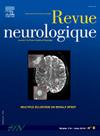Artificial intelligence for the detection of interictal epileptiform discharges in EEG signals
IF 2.3
4区 医学
Q2 CLINICAL NEUROLOGY
引用次数: 0
Abstract
Introduction
Over the past decades, the integration of modern technologies — such as electronic health records, cloud computing, and artificial intelligence (AI) — has revolutionized the collection, storage, and analysis of medical data in neurology. In epilepsy, Interictal Epileptiform Discharges (IEDs) are the most established biomarker, indicating an increased likelihood of seizures. Their detection traditionally relies on visual EEG assessment, a time-consuming and subjective process contributing to a high misdiagnosis rate. These limitations have spurred the development of automated AI-driven approaches aimed at improving accuracy and efficiency in IED detection.
Methods
Research on automated IED detection began 45 years ago, spanning from morphological methods to deep learning techniques. In this review, we examine various IED detection approaches, evaluating their performance and limitations.
Results
Traditional machine learning and deep learning methods have produced the most promising results to date, and their application in IED detection continues to grow. Today, AI-driven tools are increasingly integrated into clinical workflows, assisting clinicians in identifying abnormalities while reducing false-positive rates.
Discussion
To optimize the clinical implementation of automated AI-based IED detection, it is essential to render the codes publicly available and to standardize the datasets and metrics. Establishing uniform benchmarks will enable objective model comparisons and help determine which approaches are best suited for clinical use.
脑电图信号中间歇癫痫样放电的人工智能检测
在过去的几十年里,电子健康记录、云计算和人工智能(AI)等现代技术的整合已经彻底改变了神经病学医疗数据的收集、存储和分析。在癫痫中,癫痫样间期放电(IEDs)是最确定的生物标志物,表明癫痫发作的可能性增加。它们的检测传统上依赖于视觉脑电图评估,这是一个耗时且主观的过程,导致误诊率很高。这些限制促使人工智能驱动的自动化方法的发展,旨在提高IED检测的准确性和效率。方法自动IED检测的研究始于45年前,从形态学方法到深度学习技术。在这篇综述中,我们研究了各种IED检测方法,评估了它们的性能和局限性。结果传统的机器学习和深度学习方法已经产生了迄今为止最有希望的结果,它们在IED检测中的应用也在不断增长。如今,人工智能驱动的工具越来越多地集成到临床工作流程中,帮助临床医生识别异常,同时降低假阳性率。为了优化基于人工智能的IED自动检测的临床实施,必须公开提供代码,并对数据集和指标进行标准化。建立统一的基准将实现客观的模型比较,并有助于确定哪种方法最适合临床使用。
本文章由计算机程序翻译,如有差异,请以英文原文为准。
求助全文
约1分钟内获得全文
求助全文
来源期刊

Revue neurologique
医学-临床神经学
CiteScore
4.80
自引率
0.00%
发文量
598
审稿时长
55 days
期刊介绍:
The first issue of the Revue Neurologique, featuring an original article by Jean-Martin Charcot, was published on February 28th, 1893. Six years later, the French Society of Neurology (SFN) adopted this journal as its official publication in the year of its foundation, 1899.
The Revue Neurologique was published throughout the 20th century without interruption and is indexed in all international databases (including Current Contents, Pubmed, Scopus). Ten annual issues provide original peer-reviewed clinical and research articles, and review articles giving up-to-date insights in all areas of neurology. The Revue Neurologique also publishes guidelines and recommendations.
The Revue Neurologique publishes original articles, brief reports, general reviews, editorials, and letters to the editor as well as correspondence concerning articles previously published in the journal in the correspondence column.
 求助内容:
求助内容: 应助结果提醒方式:
应助结果提醒方式:


